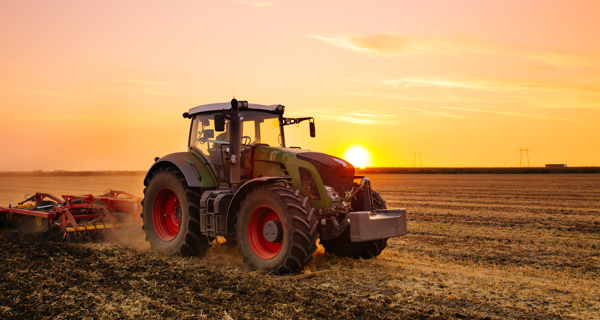Tractor Maintenance

As a country built on agriculture it comes as no surprise that tractors are one of the most common pieces of machinery and the workhorse of the farming industry.
Owning and operating a tractor, however, is hard work. Our National Underwriting Leader, David Kidd and Repair Manager, Peter Frommolt share some pointers on how to keep your machine performing at optimum and avoid unnecessary downtime or injury.
Tractor Fluids
Check tractor fluids regularly as leaking components can lead to serious damage, and can even put you or your employees in danger. Engine oil, transmitter fluid, coolant, hydraulic oil and battery electrolyte must be looked at daily.
Change the oil regularly to protect your engine and always warm the engine for a few minutes before changing the oil.
Be sure to regularly lubricate all linkages, ball joints, bearings, steering components, three-point hitch pivot points and tie rod ends.
“Using a grease gun is best and avoid pumping too hard as it may stretch the seals,” adds Peter.
To prevent squeaking and rust building up you should also apply lubricant to the engine hood hinges and other similar moving parts.
Tractor Tyres
The condition of your tyres can dramatically impact the operability of your tractor. Without the right pressure they can become water stagnant on land and lead to excess operating costs.
Consider the environment you’ll be operating in and refer to the manual for appropriate tyre size, maximum speed and total supported weight. Depending on the application, the tyres should generally fall between 12 and 20 PSI and the front tyres should be around 32 PSI.
Tractor Belts and Hoses
For tractors that have hydraulic systems there will be a lot of high pressure hoses and tubing. Fluid needs to be able to flow freely through this to prevent issues with steering and other areas.
“Worn or cracked belts need to be replaced immediately and if any leaks are present from the hoses or tubing, tighten them or replace the seal,” says Peter.
How to Clean a Tractor
Tractors are made to get dirty but that doesn’t mean you shouldn’t clean them. Dust, dirt and debris can build up in the moving parts and shorten the lifespan of the tractor. Blow out any debris with compressed air (or a leaf blower) and pay extra attention to the radiator and filters as these are more predisposed to collecting dirt.
Don’t use a hose to clear out the radiator as it can turn to mud and contaminate the coolant. Filters should be given the once over each day as they can easily be clogged, give them a quick blast of air before you get to work. The engine fan blades should also be wiped over regularly to stop dust building up.
Tractor Battery
Idle tractors can lose charge on their batteries quicker than expected. If your tractor is in regular use check the electrolyte and charge the battery, then let it run long enough to warm up. When cleaning the battery don’t let anything metal touch it as this can cause it to spark, then lightly scrub the battery with a wire brush after removing the positive then the negative wire.
Fire Protection
“Fire is a real risk to tractors but you can reduce the risk by doing a quick walk around inspection of your tractor and attend to any combustible materials or leaks that are in or around the engine and hydraulic compartments.
“It is also good practice to check the serviceability of the fire extinguishers – remember that all fire protection equipment must be serviced by a qualified service technician,” suggests David.
Operating a Tractor
Tractors are hazardous pieces of equipment that require experienced operators.
“Rollovers, backflips, and impacts are some of the most common claims we see come through, therefore, correct and safe operation is essential to prevent injury, protect your machine, and manage risk to yourself and the surrounding environment,” notes David.
Driving on narrow or raised ground poses a higher risk of rolling over embankments. Be sure that the engineering controls, particularly for un‐cabined tractors, are fitted with Roll Over Protective Structures (ROPS).
Travel slowly when working on slopes and inclines, keep the front end loader as close as possible to the ground and only use the drawbar when towing.
“You can widen the wheel width of the tractor to the maximum to increase stability of the tractor and remain within the Safe Working Load (SWL) of your machine,” adds David.
Want added peace of mind for your tractor? Speak to one of our Yellow Cover experts about our market-leading mobile plant and equipment policy.